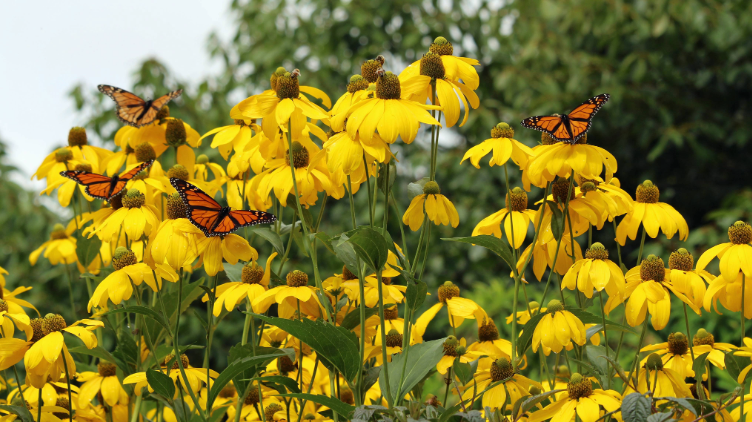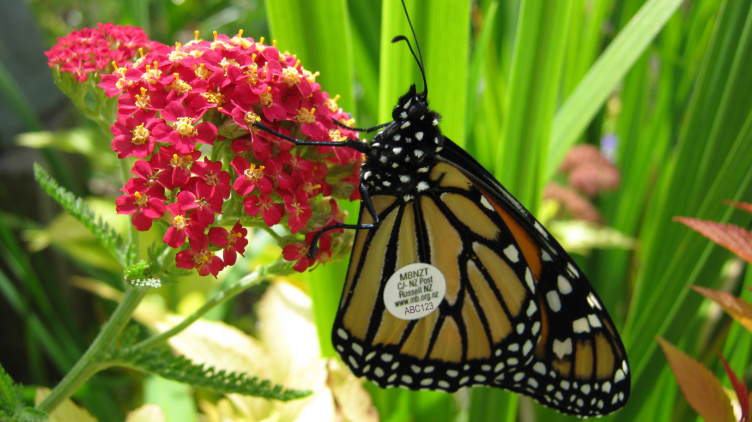
On The Move - Monarch Butterflies
19 Jun, 2025
Here in New Zealand, we still don’t know enough about where our monarchs spend the winter. In the past, overwintering sites were observed around Auckland in places like Blockhouse Bay, Onehunga, and Orewa — with hundreds of butterflies clustering in tall conifer trees. Sites have even been reported as far south as Oamaru. But over time, much of this local knowledge has been lost.
“Not only that,” says Jacqui Knight from the Moths and Butterflies of NZ Trust (MBNZT), “but their numbers each year are much less than previous years. We believe that this is because of the pest species of wasps, which harvest protein to feed juvenile wasps.”
To better understand monarch migration and overwintering in Aotearoa, MBNZT members have been tagging butterflies this past autumn. These small tags link back to the Trust’s website, helping to collect vital data on butterfly movements.
Gardeners across the country can play an important role. If you spot a tagged monarch visiting your garden on a warm winter day, you can report the sighting online. You can also help by planting nectar-rich flowers — shrubs like hebes, bottlebrushes, and echinacea are all butterfly favourites.
“And we would encourage people to plant more swan plants in the spring, so that the returning female monarchs have places to lay their eggs,” she said. “Watching out for and destroying wasp nests is important as well.”
Kings Plant Barn proudly supports the cause, carrying the “Approved by Butterflies” mark from MBNZT — meaning all their swan plants are safe and caterpillar-friendly during the season.
Learn more about monarch butterflies and how to report sightings at nzbutterflies.co.nz
